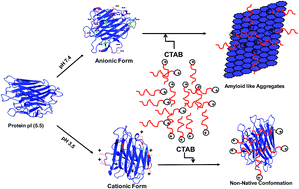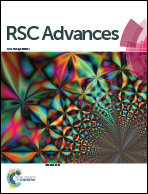Cetyltrimethylammonium bromide (CTAB) promote amyloid fibril formation in carbohydrate binding protein (concanavalin A) at physiological pH
Abstract
Amyloid fibril formation has been seen as the underlying reason for various pathological disorders studied in humans. Understanding the mechanism of amyloid fibril formation is important to prevent the onset or to develop a possible cure. In this study, we have experienced to understand the role of positively charged head and hydrophobic tail of cationic surfactant and its propensity to stimulate amyloid fibril formation in concanavalin A. Several spectroscopic techniques (far-UV CD, FTIR, Rayleigh scattering, turbidity, intrinsic fluorescence, and dye binding assays) in addition to transmission electron microscopy were employed to analyze the mode of interaction between ConA and cetyltrimethylammonium bromide (CTAB) during amyloid fibril formation. We have found that negatively charged ConA at pH 7.4, transforms into amyloid fibril in response to significantly low concentrations of CTAB while higher concentrations abolishes the amyloid fibril formation. Interestingly, ConA at pH 3.5 did not form amyloid fibril at varying concentrations of CTAB. A characteristically unique type of secondary structural transition was seen under the varying concentrations of CTAB. At low CTAB concentrations far-UV CD spectrum minimum shifts towards higher wavelength (222–225 nm) whereas at higher concentrations the β-sheet transformed into α-helical structures which is also evident from FTIR measurements. These results suggest that electrostatics as well as hydrophobic interaction are involved in the CTAB induced amyloid fibril formation. This study opens up the possibilities to understand the molecular mechanism of the interaction between CTAB and ConA and also helps to make a molecule which can inhibit or suppress the amyloid fibrillogenesis.

- This article is part of the themed collection: Towards understanding and treating Alzheimer’s disease


 Please wait while we load your content...
Please wait while we load your content...